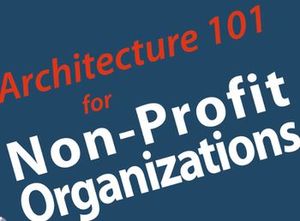Architecture 101 for Not Profit Organizations

Non-profit organizations face some unique challenges when building a new building – and SOA should know – we’ve worked with a lot of great non-profits over the years. We just celebrated the ribbon cutting of one of SOA’s largest non-profit projects, Special Olympics Missouri’s new Headquarters in Jefferson City, after a decade of working together! Given our experience with Special Olympics, Clary Shy Agriculture Park, LOVE Inc and many others, we hosted an “Architecture 101” Lunch and Learn last week, geared specifically for non-profits. See the highlights below. And check out SOA’s new Resources section for lots of information on “getting your ducks in a row” for a new project, non-profit or otherwise.
TIMELINE: Design and Construction (almost always) takes longer than you think!
- Fundraising is often the biggest unknown for a non-profit. It can take years, but working with an architect early in the process to develop a “rendering” can really help communicate your vision and facilitate donations.
- It helps to be aware of complexities like rezoning, asbestos removal (in existing buildings), or review by outside groups (i.e. historic preservation approval). Consulting an architect to guide in the selection of a site, or evaluate the site you own, can help you identify site complexities that might add time or cost to your project.
ASSEMBLING A BUILDING COMMITTEE
- As Jeff Bezos of Amazon points out, smaller groups can make decisions faster than larger groups.
- Defining the decision-making process is critical for a non-profit. Deciding in advance what roles the board members and staff play in the design and construction process will help your group be efficient.
- Committees need to have (at least some) members with authority to make decisions and perspective on the non-profit’s history, culture, vision, donors etc. All committee members need to be willing to commit to the process. Irregular attendance will mean constantly catching people up-to-speed or rehashing previous decisions.
PROGRAM AND BUDGET: These two factors are inter-related for non-profits. It’s hard to say which comes first!
- A Program is basically a list of the functions, rooms and equipment that are planned for your building. Frequently it’s helpful to consult with an architect to develop the Program.
- For non-profits especially, the Budget may be a moving target based on fundraising. If fundraising projections are low, then the Program may be reduced or phased to accommodate budgetary limitations.
- Non-profits should be aware of the difference between a Construction Budget and a Project Budget. There are several “owner’s costs” that new clients may not be thinking of.
These are just a few of the considerations we reviewed – don’t hesitate to call SOA if the non-profit that you work, volunteer or contribute to, has questions about a starting a new project!
Featured Resource

Establishing a Project Timeline
"Getting your Ducks in a Row" E-booklet 3
Download E-BookletCategories
- Design Nuts & Bolts
- Ownership, Operations & Maintenance
- Energy Efficiency
- Making a Great Project Team
- "Building" your Business
- Dollars & Sense
- SOA News & Events
- Interior Design
- Case Studies
- Sites & Landscaping
- Sustainable Design
- Adaptive Reuse / Renovation




